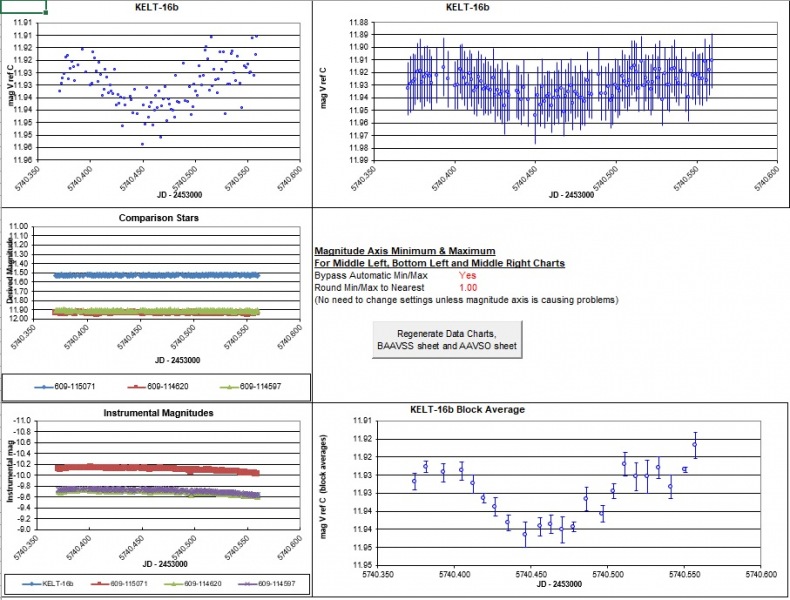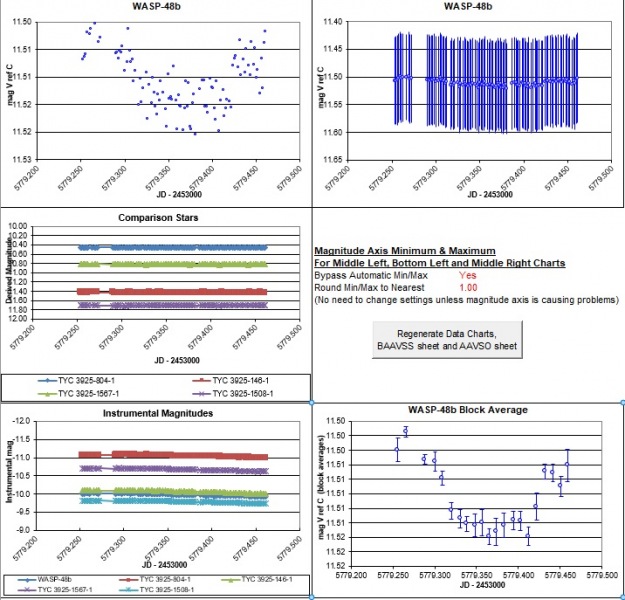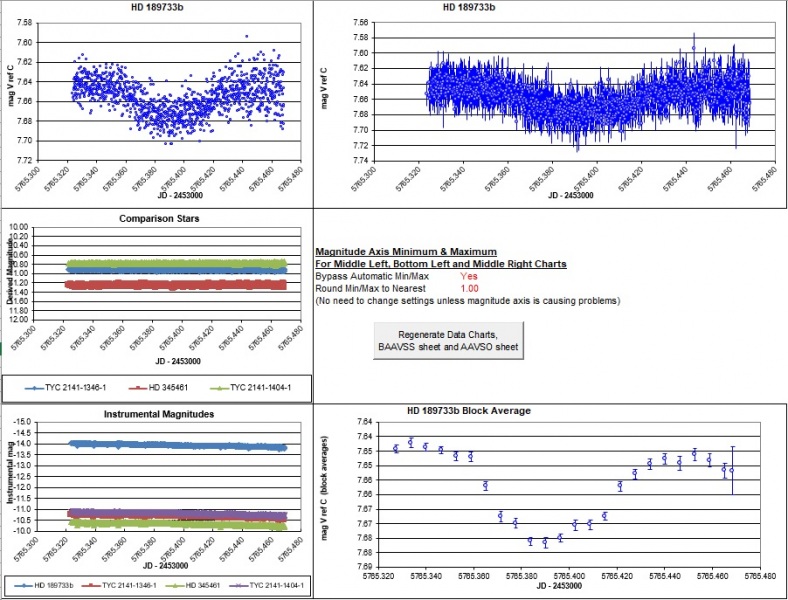Some more Exoplanet transits for the ExoClock project:








Astronomy every Thursday
Some more Exoplanet transits for the ExoClock project:









Over the last few years, a number of “Smart Telescopes” have been developed for amateur use.
These typically consist of a relative narrow optical train attached to an automated mount. They have software to provide plate solving, tracking and image stacking. They are easy to setup and use.
They have relatively narrow fields and due to their short focal lengths (as well as small apertures) and are best suited to imaging small deep-sky objects.
Unistellar – a French Company setup in 2016 with £2m+ Kickstarter funding – first delivered its scope commercially in 2021. Unlike their competitors they foresaw the possibility of using them for science as well as taking pretty pictures. They partnered with SETI in Mountainview California to produce a program which included exoplanet transit observations.
At 4.5” aperture the scopes are considered too small to take part in the ExoClock program.

SETI produces a list of favoured targets for study. This is based mostly on the NASA requested targets for the TESS satellite. There are about 12,000 eVscope located all around the world but principally in Europe, the USA and Japan. These were the regions where the scopes were first marketed. About 1500 of these have been registered to the “Science” program and of those my impression is about 100 have been actively used for exoplanet observation. The figures for the week commencing 5/5/24 were 48 observations by 38 observers of 13 targets.
Although there are now several different models of eVscope they are all based around the same optical configuration. This is important as it makes combining data from different scopes relatively easy. SETI have set up a data reduction pipeline that takes uploaded raw frames from participating scopes and produces graphical and numerical output which is returned to participants via a Slack channel. When appropriate, the data from telescopes in different time zones can be combined to allow observations which are impossible from a single site.
This enables long transits to be observed and also long observations of poorly known timings to be tackled. Recently, the program has included candidates whose transits have only been captured 2 or 3 times. The aim is to see if there are any intermediate transits that would suggest a shorter period than originally calculated.
The latest combined observation attempt involved HIP 41378f which has a period of 542 days and transits lasting 19 hours. The ingress was timed to be first visible in S America and then egress in Western Europe. Individual observers were requested to make 2-4 hour observations during the time the star was at least 25 deg above the horizon. The plan was to have the star under continuous observation for 35 hours! (Most people were going to see no transit!). This therefore also included observers in Japan and Australia. 26 telescopes provided data. The results are awaited.
It is possible for single observers to choose their own targets (Usually from the Swarthmore database -astro.swarthmore.edu) and then do their own analysis. Until recently that involved requesting the data from the SETI servers to which it had been sent directly by the telescope’s internal software. This was slow and tedious, involving downloading about 10GB of data which had previously been sent to them. After lobbying from the users, it is now possible to download the data straight from the telescope to a local laptop.
My personal impression is that these scopes will never substitute for results from 8”+ aperture scopes but their uniformity and world-wide distribution plus consistent data reduction means that they have a place in Exoplanet observation.
Mike Rushton
The videos from the British Astronomical Association (BAA) Exoplanet Division Online Workshop held on Saturday 12th November are now available to watch on the BAA YouTube Channel.
The below talk titles are links to watch the videos.
Two videos are by CMHASD members Rodney Buckland and Martin Crow.
Exoplanet Division update
EXPLORE introduction
Ariel and ExoClock with Anastasia Kokori
Mission and observational efficiency
ExoClock – a model of pro-am collaboration
EXPLORE Part 1 – Detecting exoplanets with Rodney Buckland
Observation
Modelling
Searching databases
Zooniverse
How to discover an exoplanet (telescope and camera not required) with Roger Dymock
EXPLORE Part 2 with Martin Crow
Introduction to HOPS
Synchronous observations to detect shallow transits
Data mining transit observations for variable star photometry
An alternative to HOPS
Observing with robotic telescopes by Rodney Buckland
EXPLORE NEEDS EXPLORERS with Roger Dymock
Rodney's Video
Martin's Video
[et_pb_section fb_built="1" _builder_version="3.29.3" global_colors_info="{}"][et_pb_row _builder_version="3.29.3" global_colors_info="{}"][et_pb_column type="4_4" _builder_version="3.29.3" global_colors_info="{}"][et_pb_text admin_label="Blurb" _builder_version="3.29.3" global_colors_info="{}"]
KELT-16b is an exo-planet in Cygnus, member Martin Crow measured the brightness of the parent star (KELT48) in order to capture the small drop in brightness when the planet transits the face of the star, this is a very subtle observation that requires a lot of attention to detail in order to capture such a small change in brightness.

[/et_pb_text][/et_pb_column][/et_pb_row][/et_pb_section]
[et_pb_section fb_built="1" _builder_version="3.29.3" global_colors_info="{}"][et_pb_row _builder_version="3.29.3" global_colors_info="{}"][et_pb_column type="4_4" _builder_version="3.29.3" global_colors_info="{}"][et_pb_text admin_label="Blurb" _builder_version="3.29.3" global_colors_info="{}"]
Exo-Planet WASP 48b is a planet discovered around star WASB 48 in the constellation of Cygnus. Member, Martin Crow measured the brightness of WASP 48, using the same techniques used for variable star observations - although the changed in brightness are very small, in order to detect the drop in brightness of the star as the exo-planet transits across the face of the star.

[/et_pb_text][/et_pb_column][/et_pb_row][/et_pb_section]
[et_pb_section fb_built="1" _builder_version="3.29.3" global_colors_info="{}"][et_pb_row _builder_version="3.29.3" global_colors_info="{}"][et_pb_column type="4_4" _builder_version="3.29.3" global_colors_info="{}"][et_pb_text admin_label="blurb" _builder_version="3.29.3" global_colors_info="{}"]
HD 189733 b is an extrasolar planet, in the constellation of Vulpecula. According to Wikipedia it is 64.5 light years away. Member, Martin Crow, used the same techniques used for observing variable stars to detect the drop in light from the parent star as the planet crossed in front of it. If you have data you want to share please contact the webmaster.

[/et_pb_text][/et_pb_column][/et_pb_row][/et_pb_section]
[et_pb_section fb_built="1" _builder_version="3.22" global_colors_info="{}"][et_pb_row _builder_version="3.25" background_size="initial" background_position="top_left" background_repeat="repeat" global_colors_info="{}"][et_pb_column type="4_4" _builder_version="3.25" custom_padding="|||" global_colors_info="{}" custom_padding__hover="|||"][et_pb_text _builder_version="4.14.7" hover_enabled="0" global_colors_info="{}" sticky_enabled="0"]
XO-2b is an example of a transiting hot Jupiter orbiting an early K dwarf star (TYC 3413-5-1) Vmag 11.2. Orbiting close in it has a period of approx. 2.615 days and takes approx. 2 hours to complete the transit. So far only partial light curves have been obtained due to weather conditions. However, with all of the observations plotted (Keith Rickard, Martin Crow) about their local transit times a phase curve has been generated.
TYC 3413-5-1 (TYC is also known as the Guide Star Catalog GSC)
J2000 RA: 7h48m06.47s DEC:+50°13'32.9"
11.2
0.02 Vmag
2.615857±0.000005 days (~2hr transit)
[/et_pb_text][/et_pb_column][/et_pb_row][/et_pb_section]